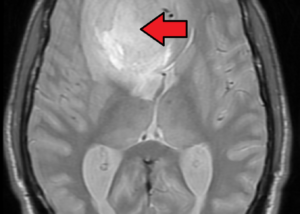
A neurologist explains the difference between twitching muscles and a spasm.
These two terms are often used interchangeably among laypeople either posting their concerns in forums, or journalists who indiscriminately toss around these two terms.
To get the distinction between muscle twitching and a spasm (of skeletal muscle), I asked Bonnie Gerecke, MD, director of the Neurology Center at Mercy in Baltimore.
“Muscle twitching refers to a small muscle contraction in the body,” says Dr. Gerecke.
“This usually entails twitching of some muscle fibers of a muscle and not necessarily the entire large muscle itself.” The entire large muscle itself is called the belly.
An example of a twitching muscle is that which commonly occurs in the eyelid. Another common area is the hamstring group.
You’ll feel the fluttering or “creepy crawlie” under the skin in a very localized spot.
If the twitch occurs in a very small muscle, such as the eyelid or pinky toe, you’ll see the jerking or jumping of the involved muscle fibers.
But that’s because the affected fibers are part of such a tiny muscle to begin with.
“Muscle spasm refers to a spontaneous abnormal contraction of a whole muscle,” continues Dr. Gerecke.
An example is when a leg jerks as you’re falling asleep (myoclonus). This is a perfectly normal phenomenon.
“A twitch is a brief phenomenon that affects a small portion of a muscle, whereas a spasm may be more prolonged and affects a large muscle group.
“A twitch does not tend to be painful, but a spasm can be quite painful.”
Myoclonus is painless, but the other kind of spasm that Dr. Gerecke refers to is, indeed, intensely painful.
For instance, you’re just awakening from a night’s sleep and without really thinking, you stretch your body, straightening and tensing up your legs — when suddenly, your calf muscle goes into a spasm.
The pain is agonizing. To relax the muscle, bend the foot upward. Massage will also help.
You may also notice sudden pain in your neck and jaw area upon doing a big yawn.
The involved muscles are going into a spasm, and it hurts quite a bit, but subsides very soon.
Even smaller muscles can go into a benign spasm, such as those in your big toe. It hurts, but quickly subsides.
Non-skeletal muscle can also spasm, such as the uterus (menstrual cramps) and the esophagus (which can make someone think they’re having a heart attack).
You now know the difference between a muscle twitch and a spasm.














